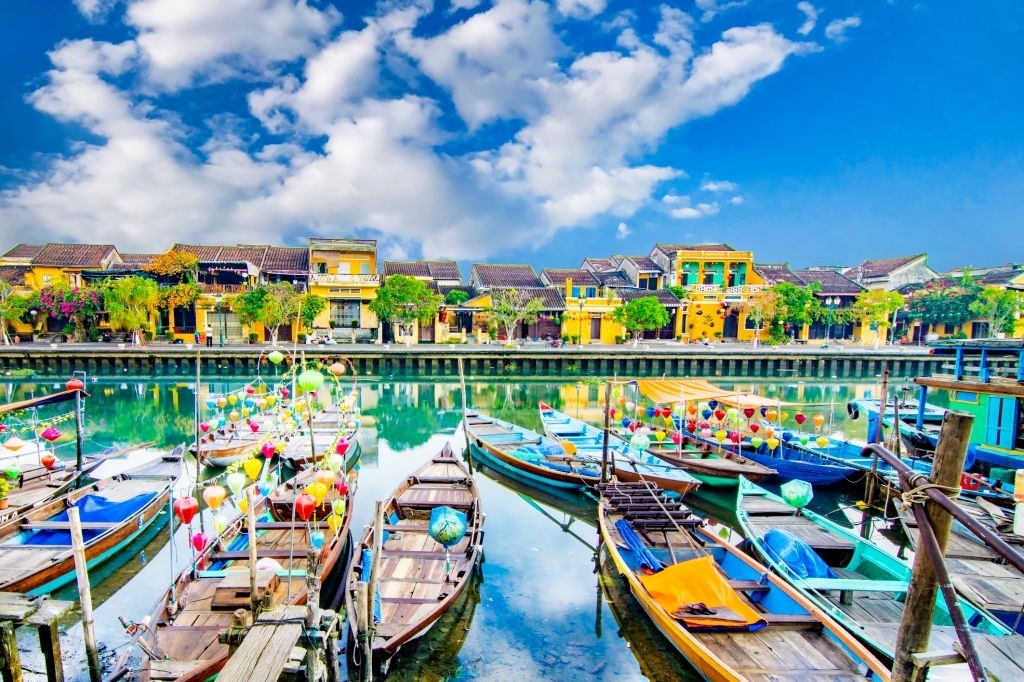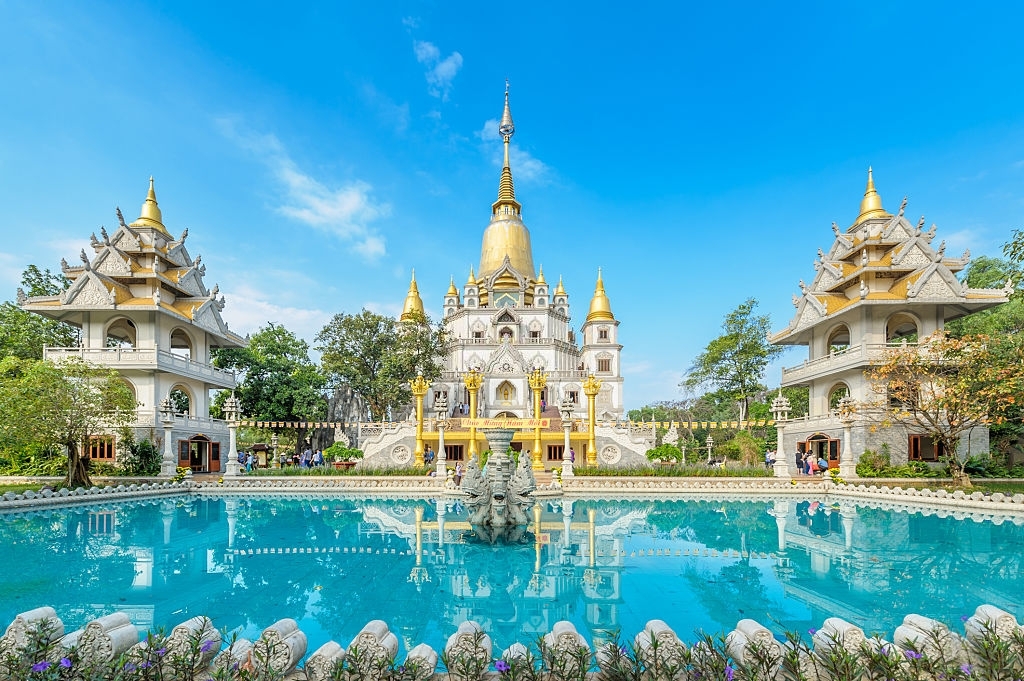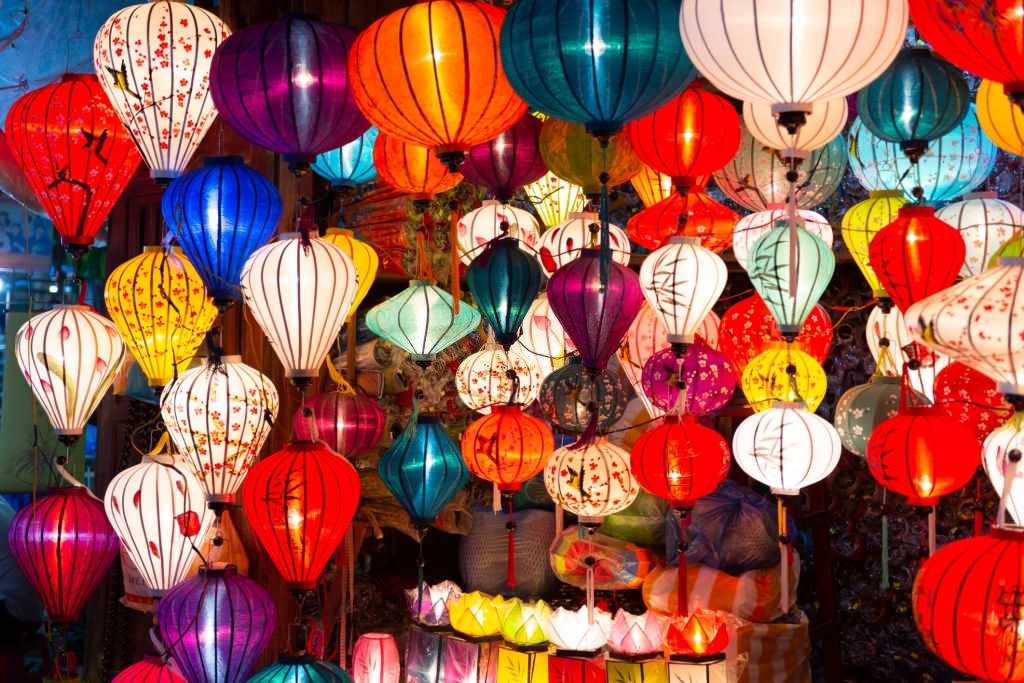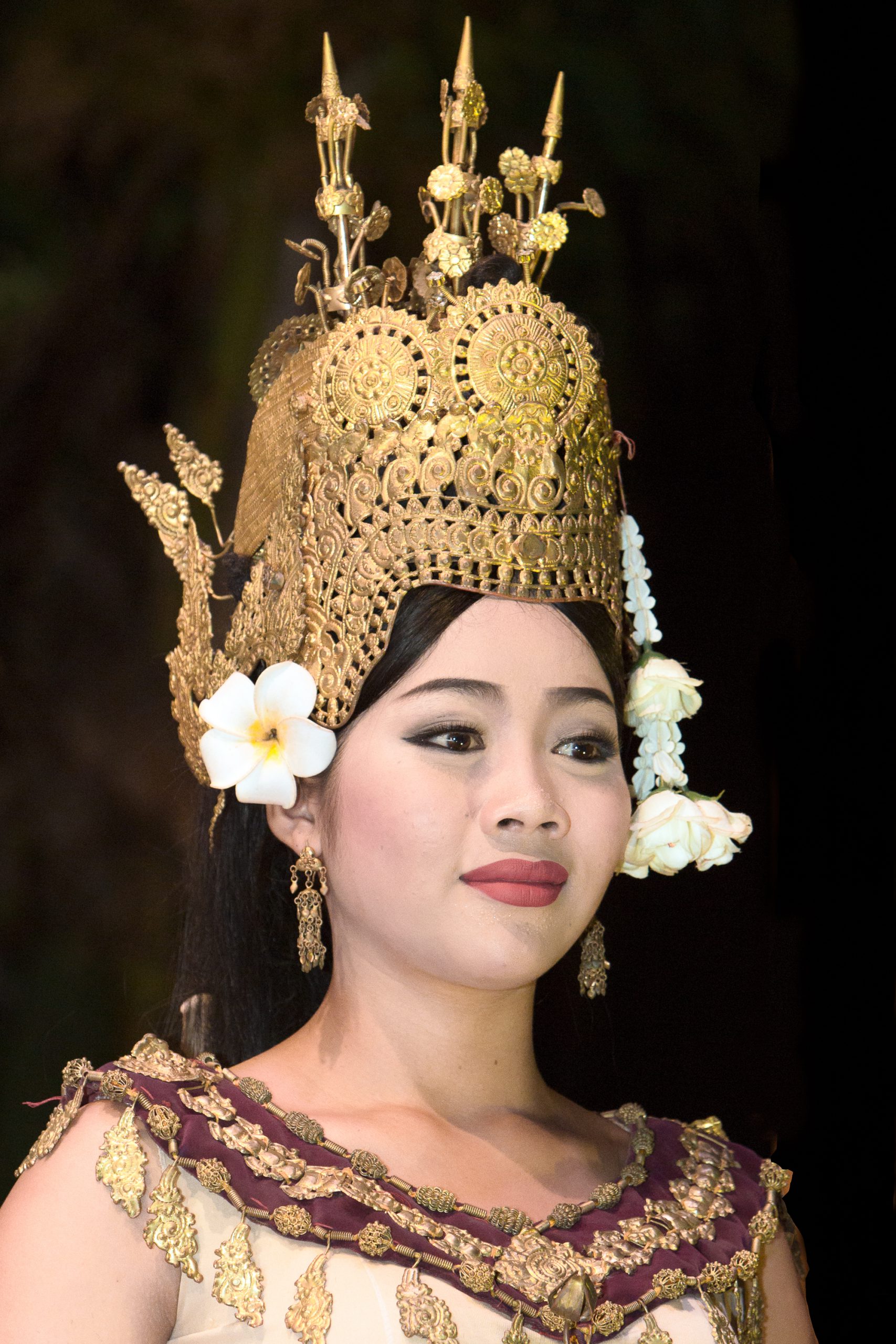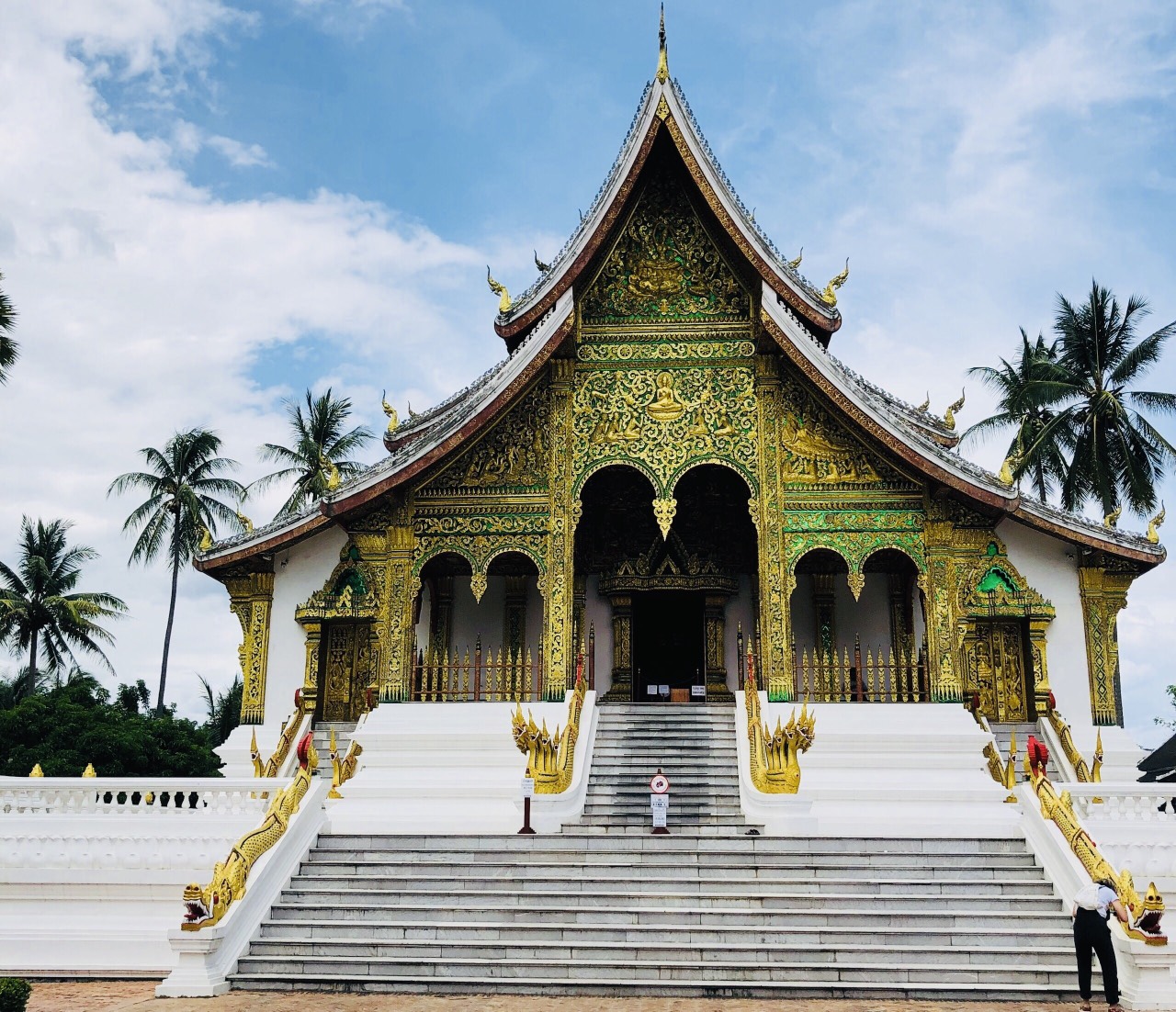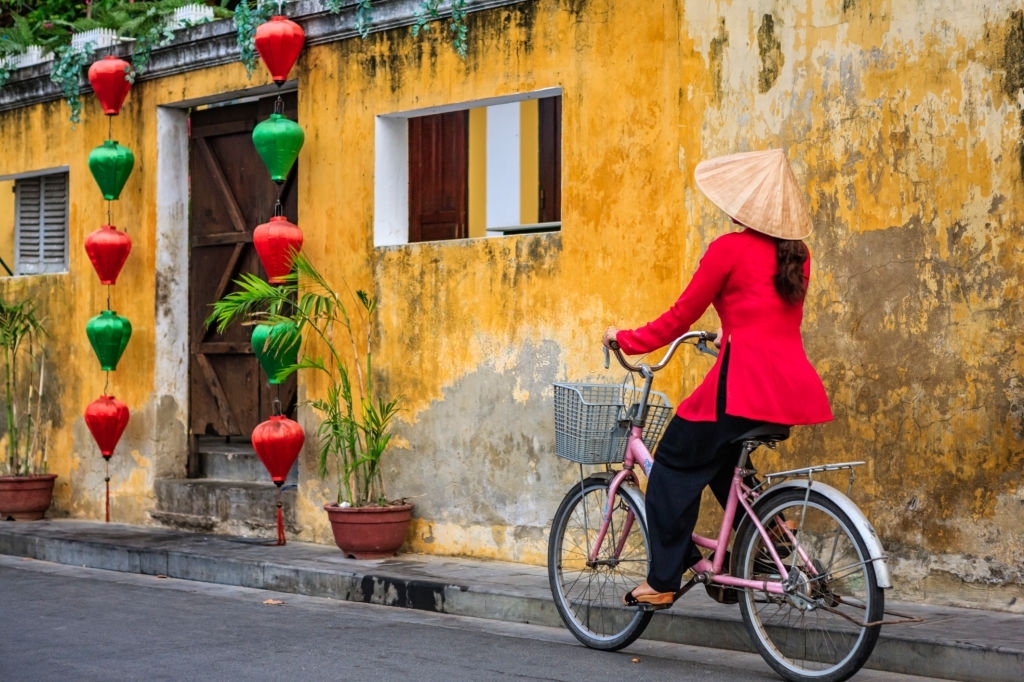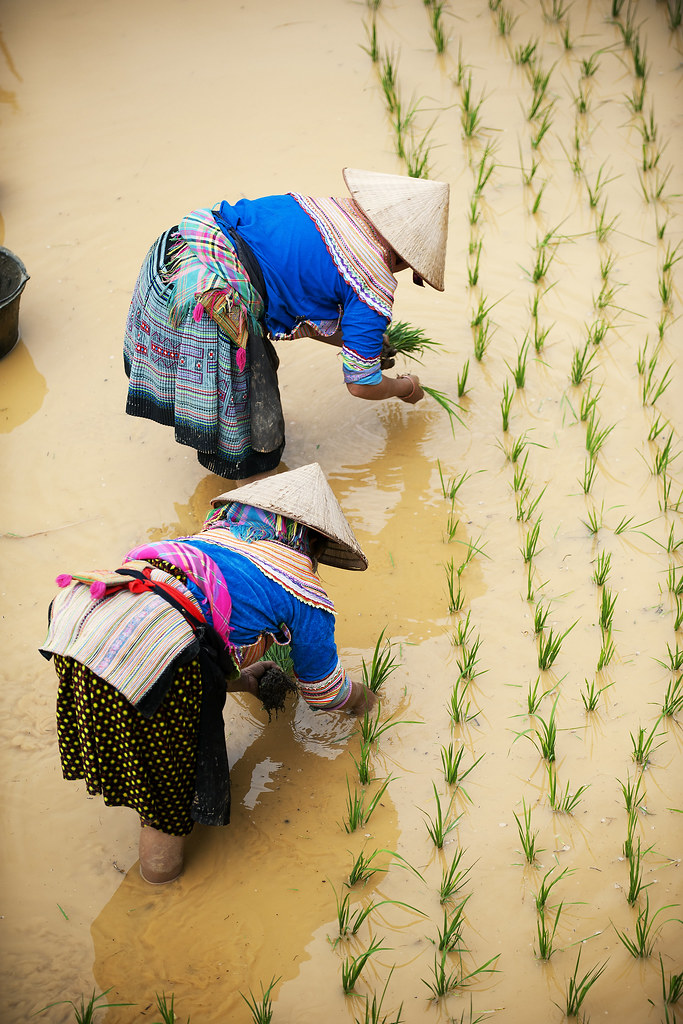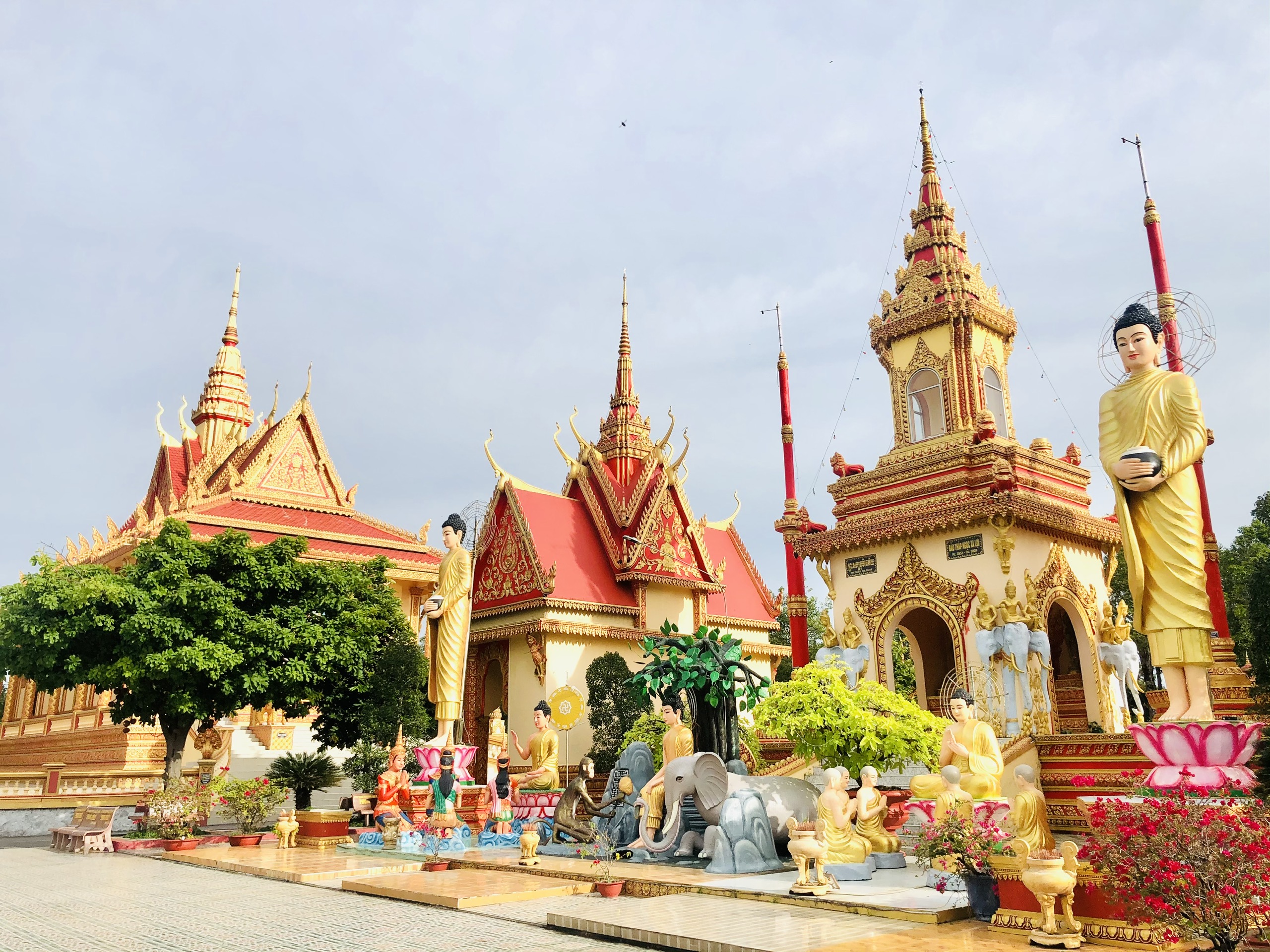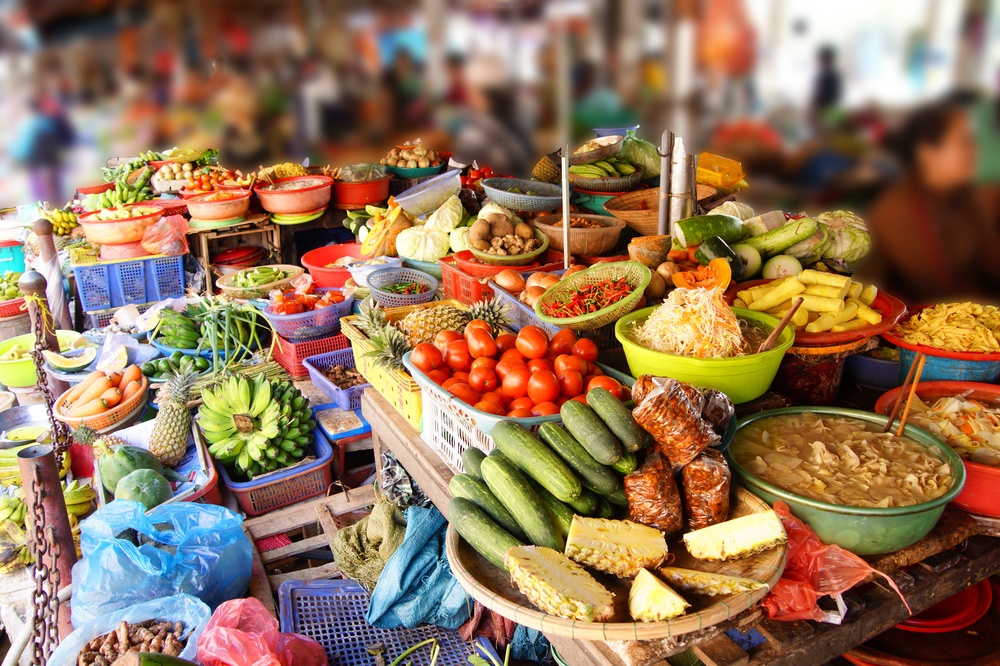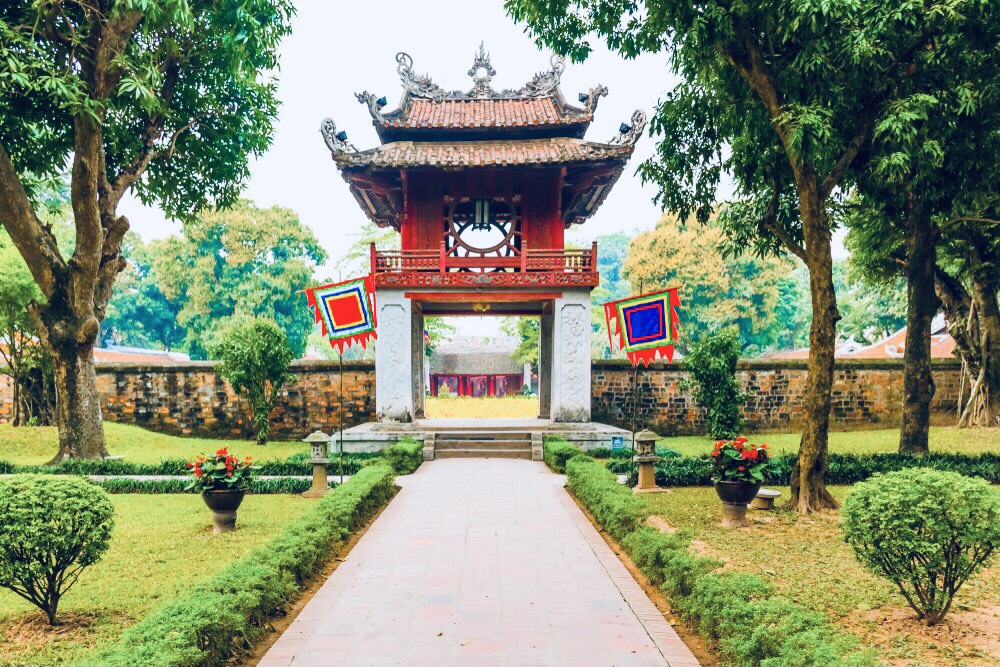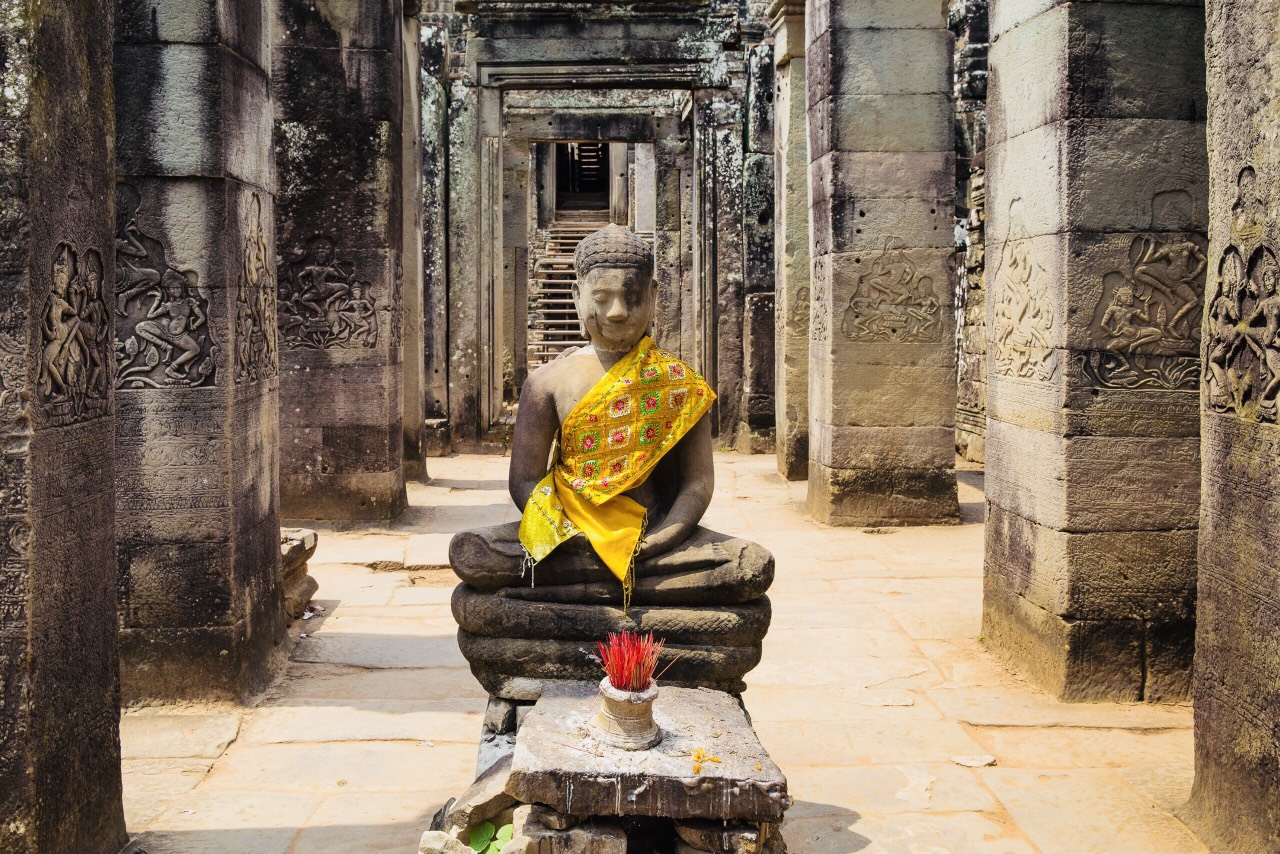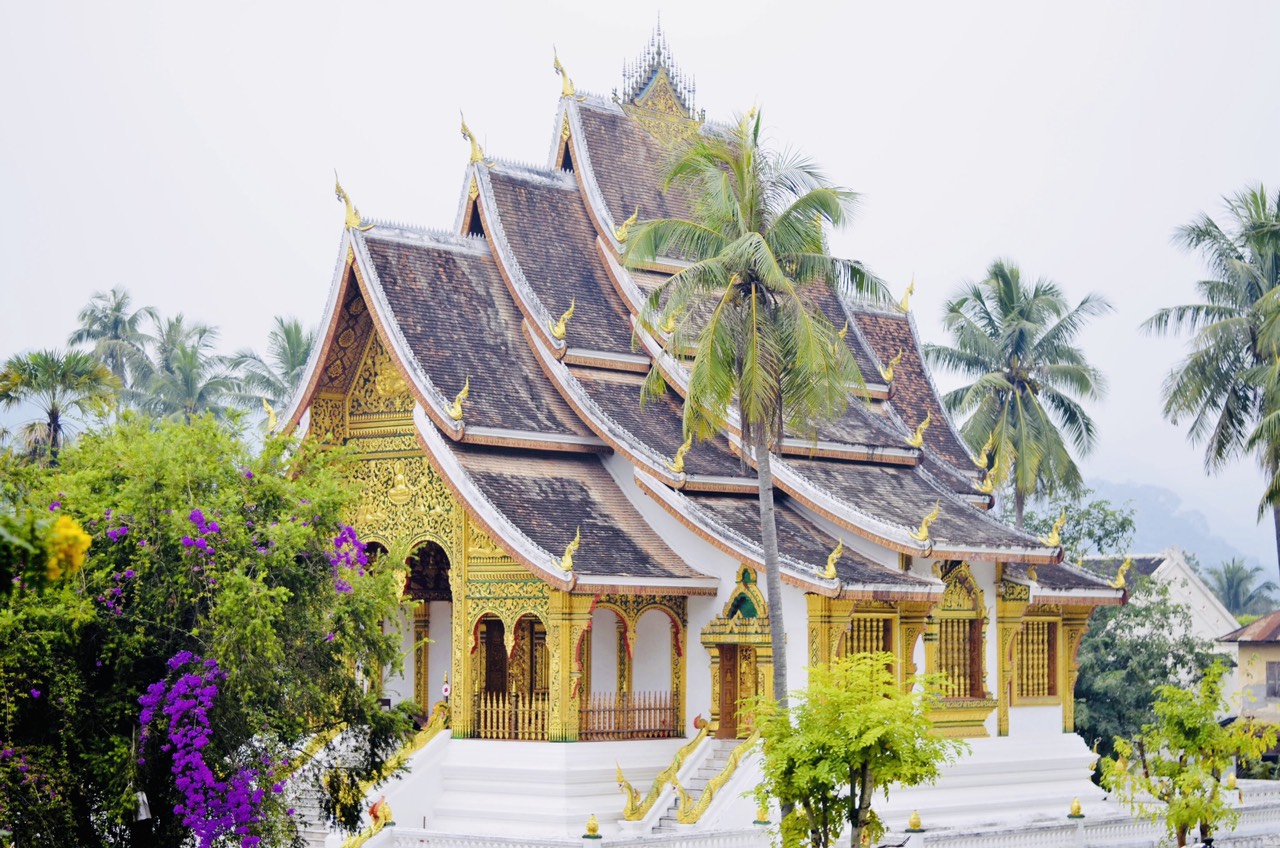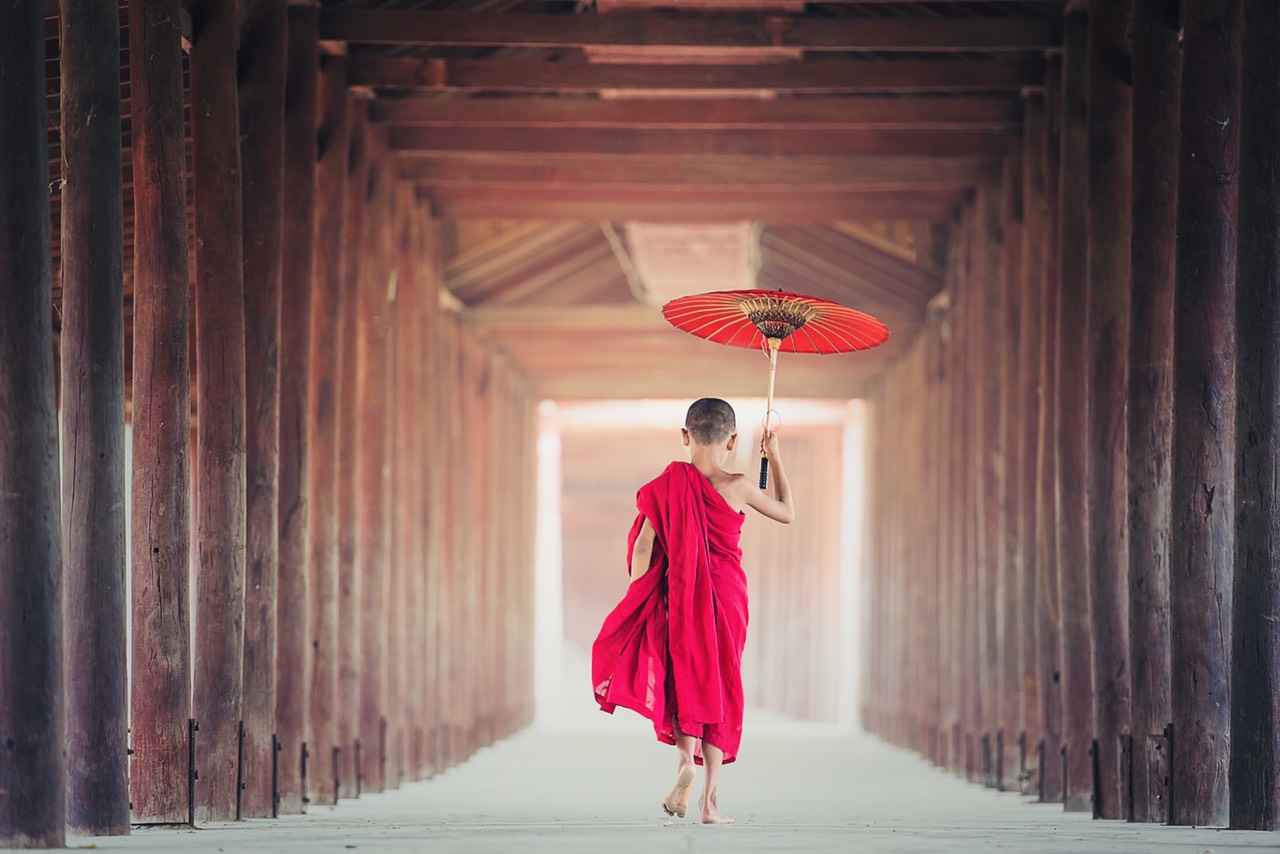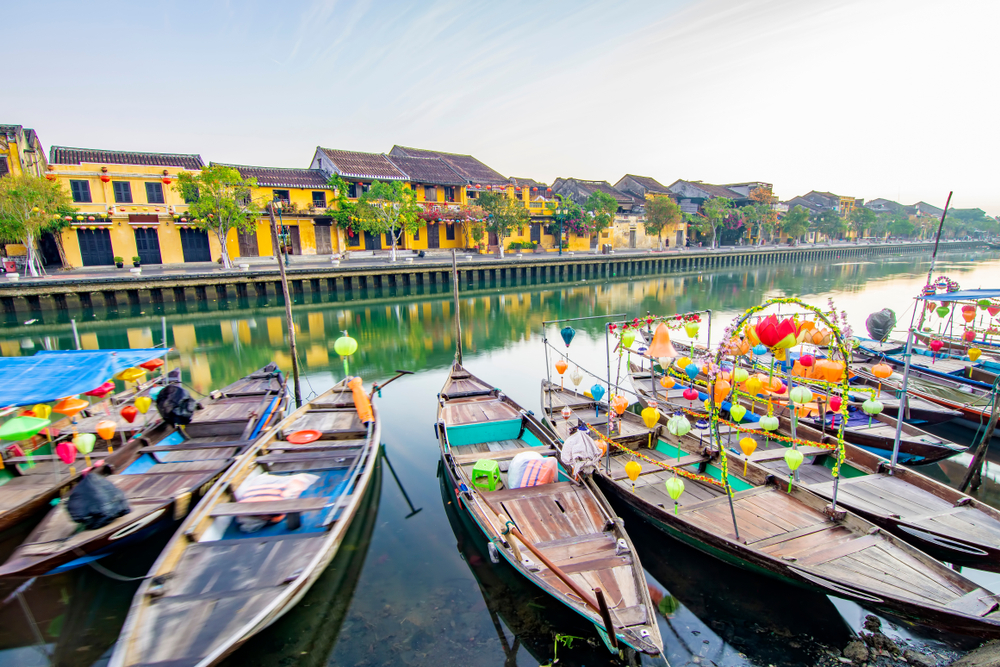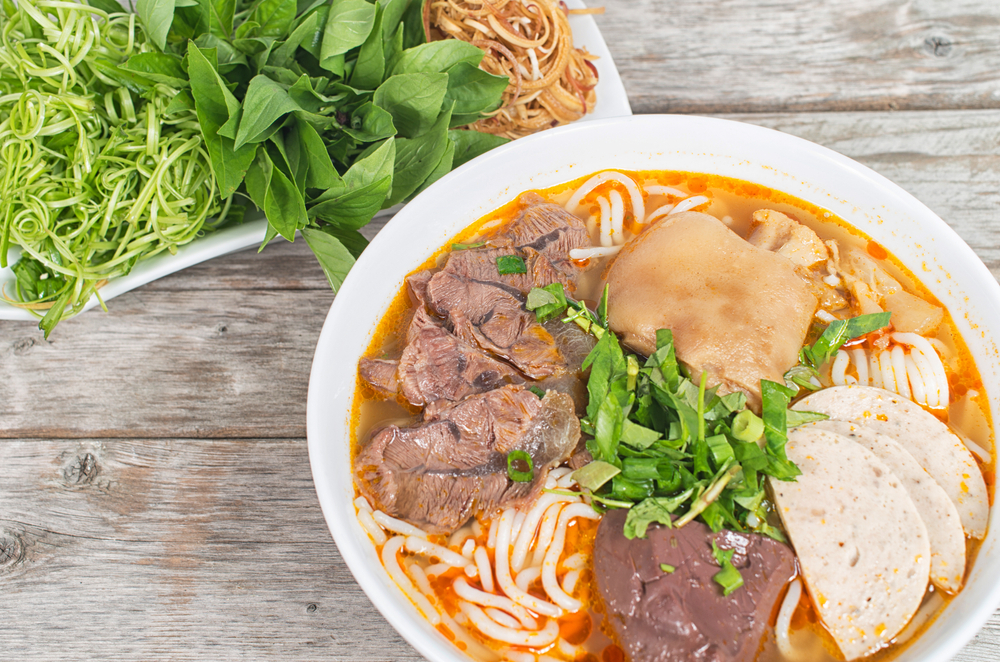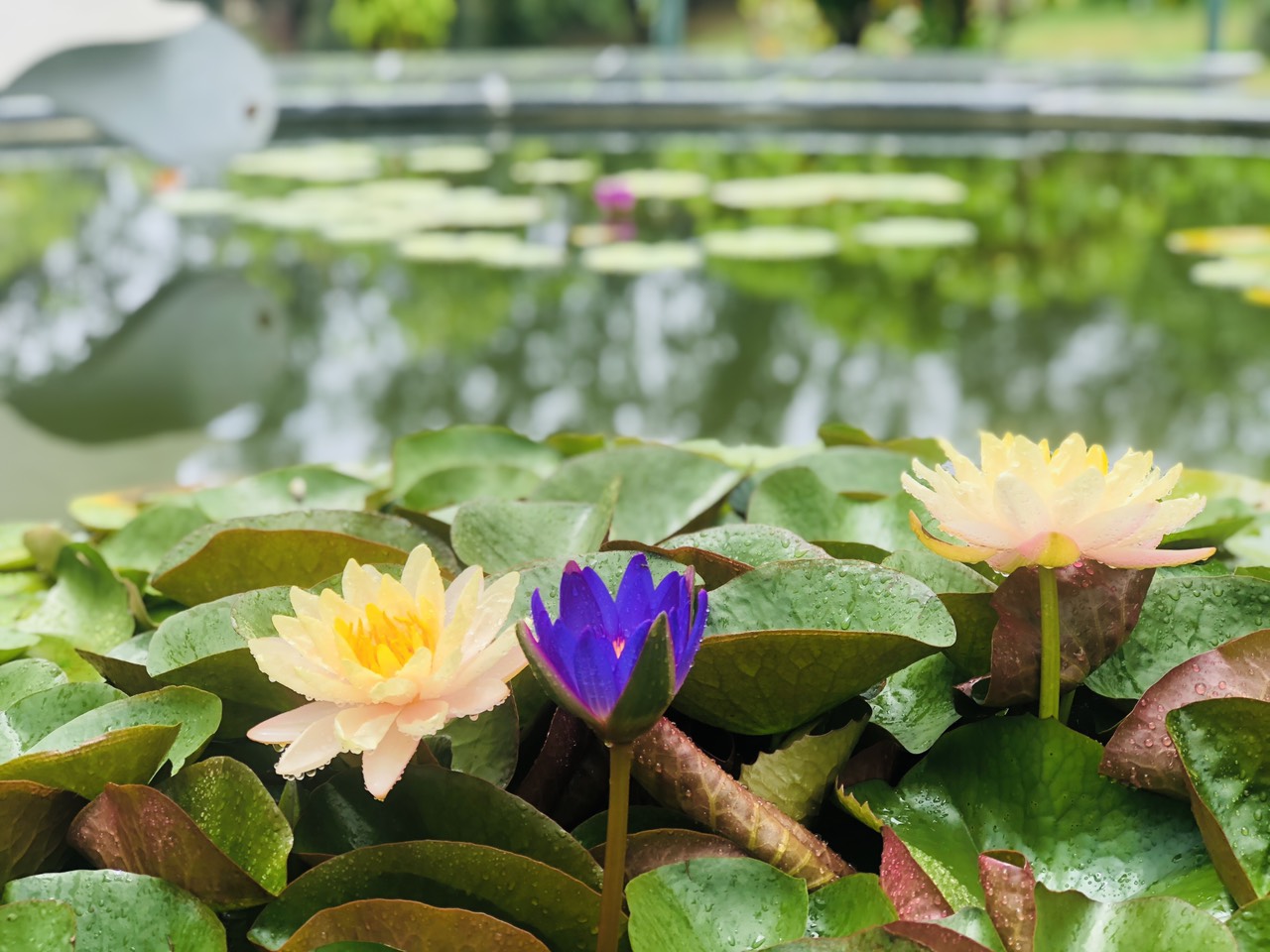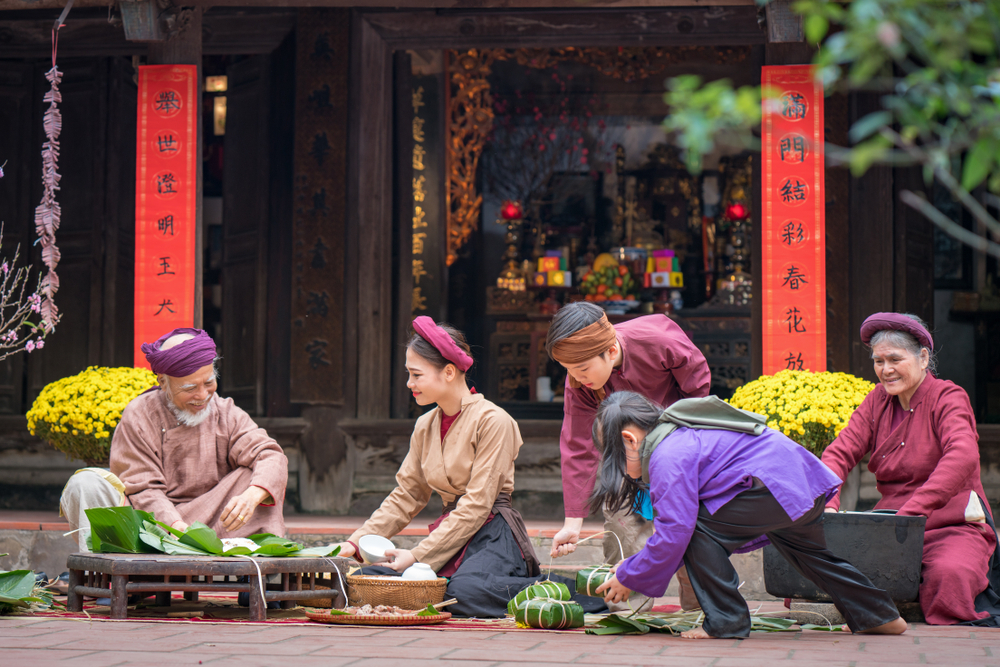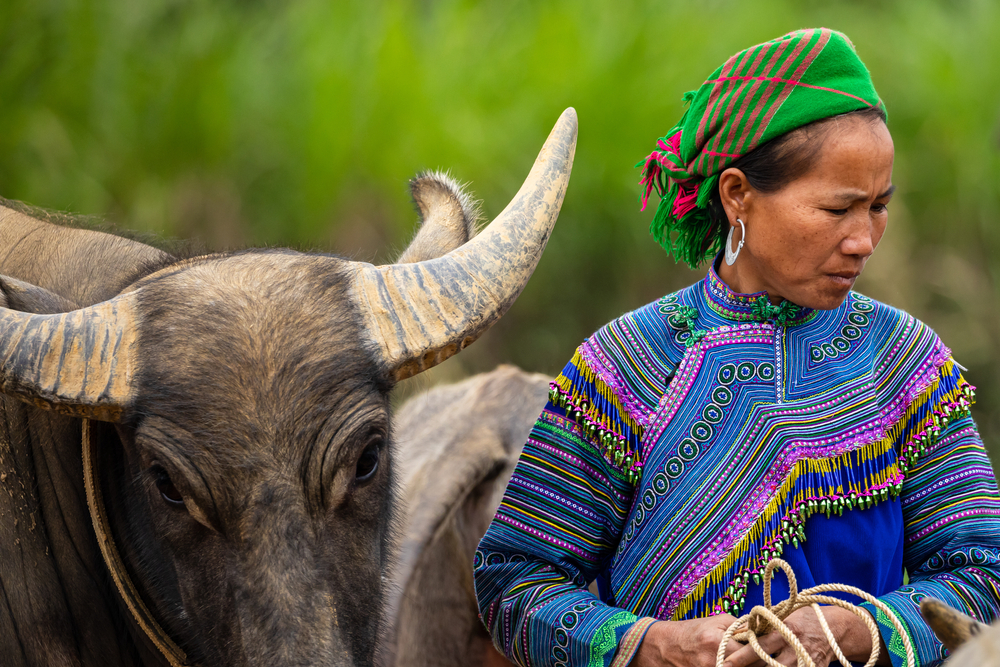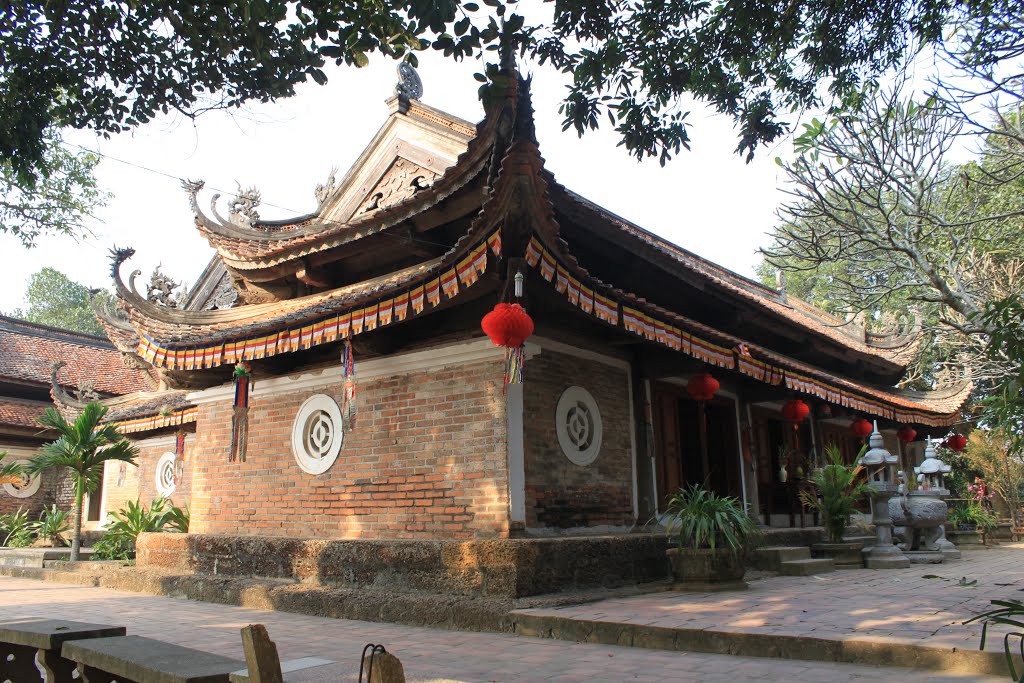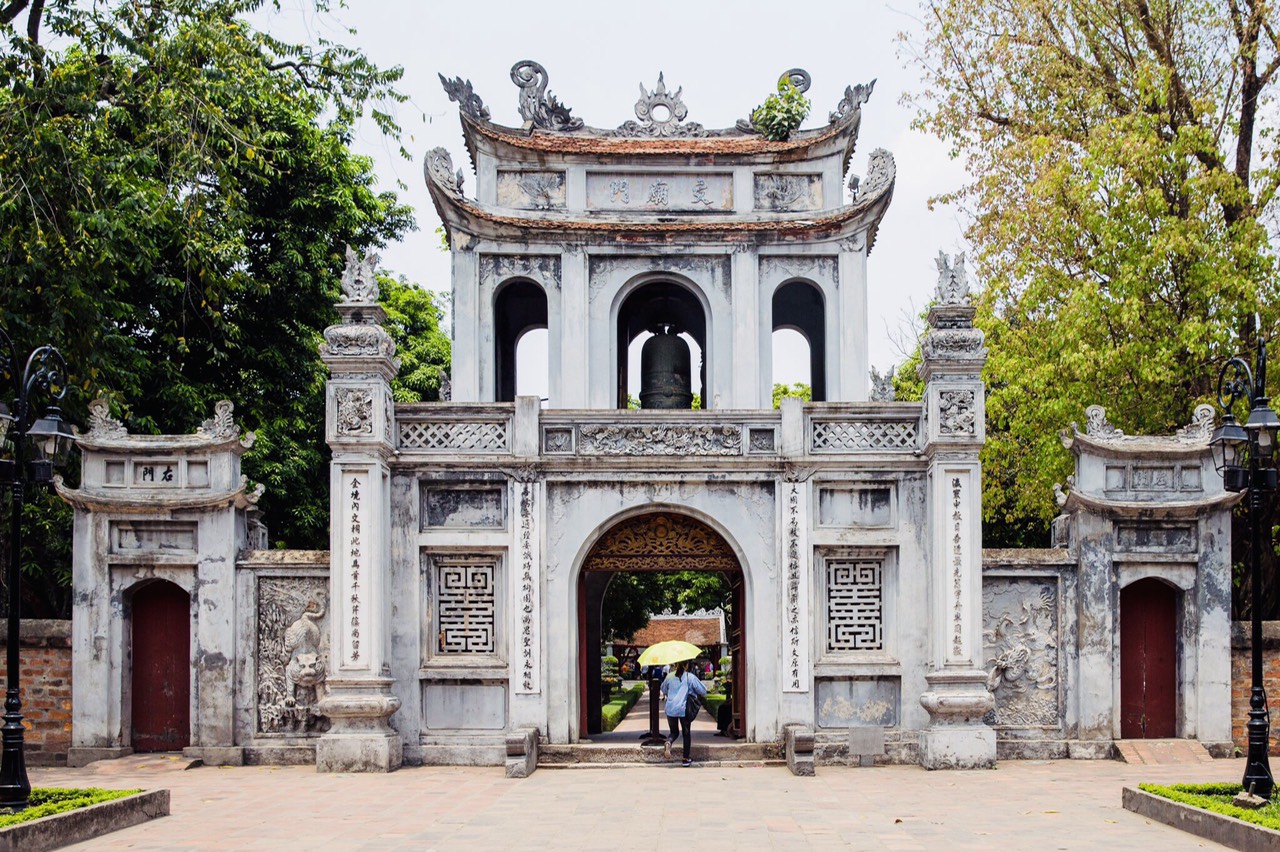
The Temple of Literature (known by the Vietnamese name: Van Mieu – Quoc Tu Giam) is one of the most famous cultural places in Hanoi.
The name of the place literally means Temple (Mieu) of Literature (Van). Historians believe that it was originally located closer to what is now called the One Pillar Pagoda, south of the Western Lake. The present site was chosen by geomancers of the Ly Dynasty to create harmony with the Taoist temple of Bich Cau and the Buddhist One Pillar Pagoda; each forming the point of a triangle.
1. Origin
“Van Mieu” was founded in 1070 during the Ly dynasty by Emperor Ly Thanh Tong. The establishment is dedicated to the cult of Confucius (Khong Tu – famous Chinese thinker, philosopher, educator and politician, founder of Confucianism). In the temple, there is an inscription that conveys exactly the spirit of the place: “Confucianism lies everywhere, east, west, south and north; dignitaries and scholars have all walked the same path.”
Six years later, built under the orders of King Ly Nhan Tong, “Quoc Tu Giam” or “Son of the Nation”, is designated as the first university in Vietnam, a high-level training and educational institution of the court. At the beginning, it was intended only for the sons of royal families, children of mandarins, children of aristocrats, who would become scholars and high officials. From 1253, under the Tran Thai Tong dynasty, the Nation College finally opened its doors to all talented students who passed the four competitive examinations (a diplomatic test; two compositions in verse and an essay on political philosophy) regardless of their social origins. With two classroom buildings and six dormitories, it could accommodate up to 300 boarders. In 1807, under the Nguyen dynasty, the College was transferred to Hue, the last imperial city in Vietnam. The building is then Van Mieu “temple of literature” of the city of Hanoi, the Khai Thanh temple is built in place of the Thai Hoc house (house of the great scholars in the 5th courtyard) to venerate the parents of Confucius.
2. Architecture
The Temple of Literature has a charming and traditional Vietnamese architecture. It is shaped like a parallelogram. In the early 19th century, the number of courtyards was increased from three to five. At the same time, the hedges which constituted the limit of the whole were replaced by the brick walls recovered at the time of the reconstruction of the citadel of Hanoi.
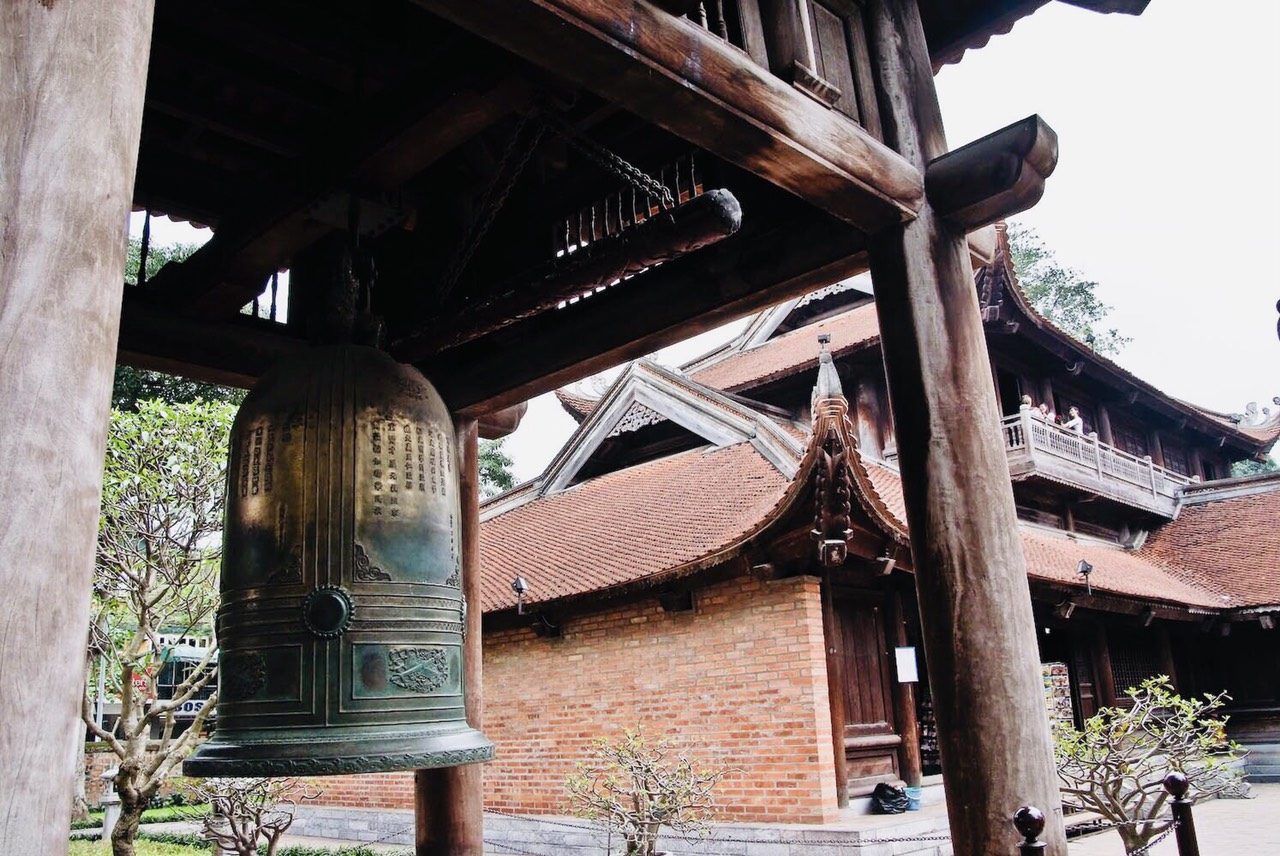
Van Mieu today is divided into five courtyards separated by porticoes or walls with doors. The number five plays an important role in Confucianism. The world is made of five elements, there are five fundamental virtues, five commandments, five misfortunes, five primordial relationships, five classics.
This historical site was well preserved, it was entirely restored in 1920 and in 1947 thanks to the work of the French School of Far East, in 1946, during the Indochina war a part of the temple was destroyed by the French. It was again restored in 1956 and completely rebuilt in 2000. The beautiful complex that we see today is the result of several constructions and restorations over the centuries.
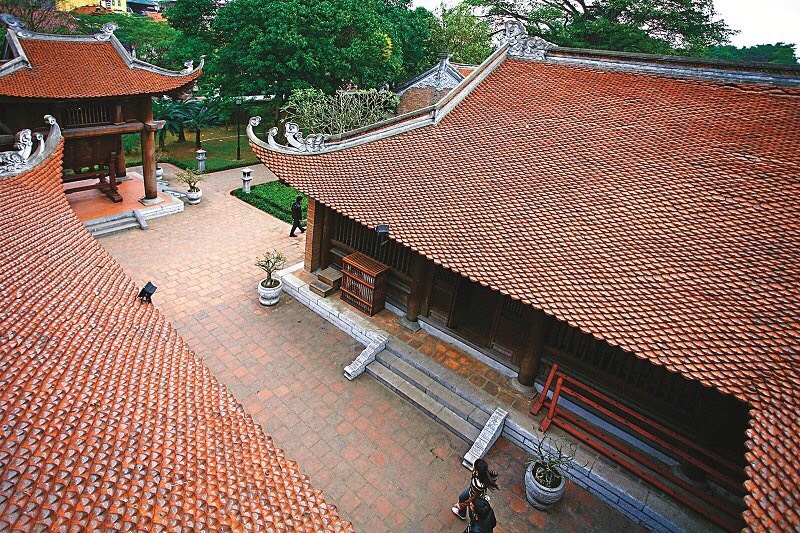
Nowadays, the Temple of Literature is considered not only an important part of Hanoi’s cultural heritage, but also a place for important events, such as the honoring ceremony of outstanding university graduates, State Professors, National Poetry Day, etc.
3. The five courts of the Temple of Literature
The Temple of Literature extends 350 meters from north to south, it is 75 meters wide in the north and 60 meters in the south.
-
The first court
Just in front of the entrance, there are four grandiose columns (Tu tru), two of which in the middle are engraved with the word “Ha ma” meaning “get off the horse”. Erected in 1771 by Nguyen Hoan – vice director of Quoc Tu Giam, the steles are to remind passers-by, no matter if they are emperors or servants, to get off their horses and walk in order to pay homage to Confucius.
Next, you will find the Gate of the Temple of Literature (or the Great Portico). This gate is a two-story stone construction with a double roof built in the later Le Dynasty (17th-18th centuries) to replace the original gate which was probably made of wood.
The Great Portico leads to the first courtyard (Entrance on the Way). The central path planted with lotus flowers, plants and sacred trees (banyan, frangipani,…) is straight.

“Virtue” and “Talent” were the keys that allowed from the first to the second courtyard, to advance a little deeper into the doctrine as the names of the side doors testify. For the right door, you will find “Thanh Duc” (Achievement of Virtue), and Dat Tai (Achievement of Talent) for the left one.
The central gate is named Dai Trung Mon (the Great Middle Gate). The name of the gate is a combination of the names of two great books of Confucianism: Dai Hoc (Great Learning) and Trung Dung (Right Middle).
This gate has an architectural style of the Le Dynasty. The ground is paved with bricks from Bat Trang village, the roof is decorated with tiles curved upwards, giving a sense of solemnity. On the roof two carps are engraved, recalling the legend “The carp turns into a dragon”, symbolizing the spirit of overcoming difficulties and perseverance to acquire knowledge to achieve success.
-
The second court
At the end of the second courtyard is the Khue Van Cac Pavilion (Pavilion of the Constellation of Fine Letters). In 1805, the pavilion was built, and in 1999, it became the official symbol of Hanoi.
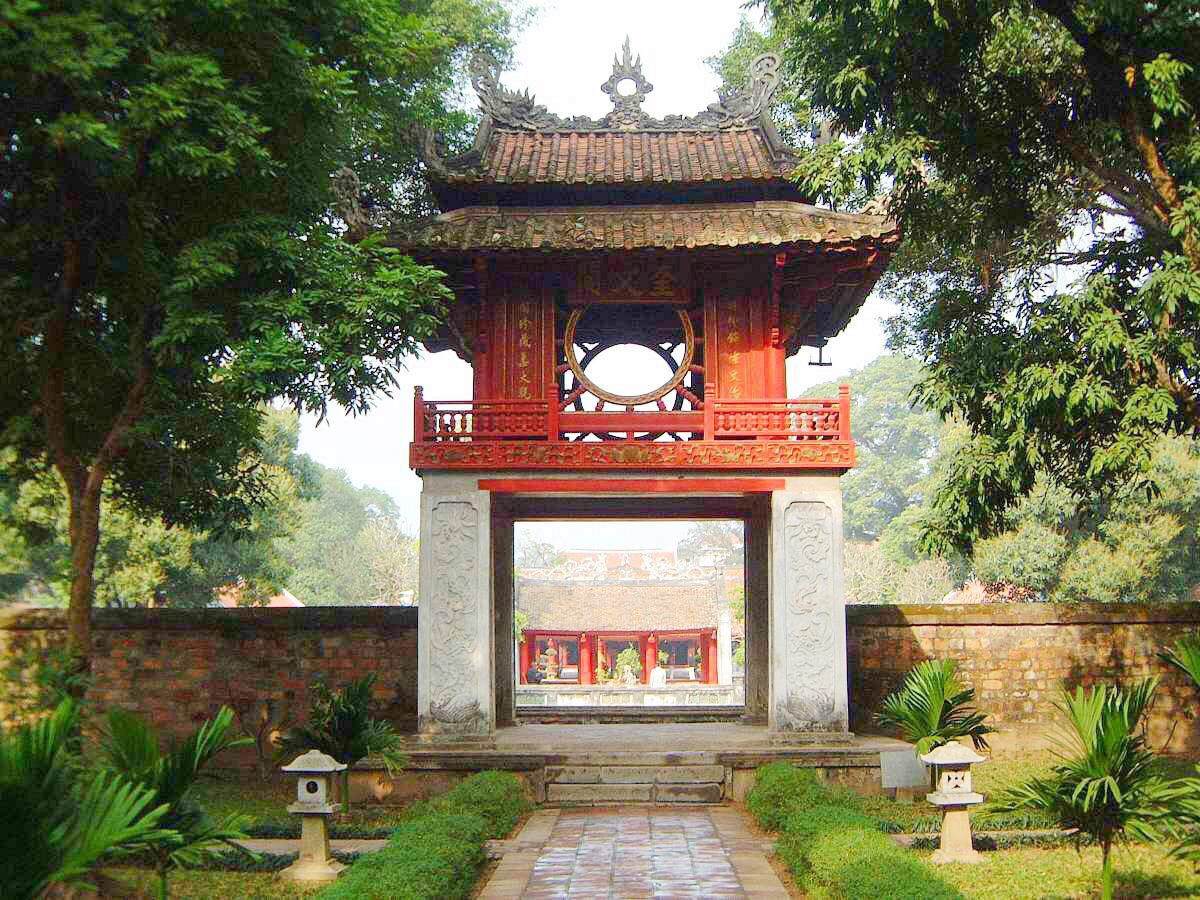
The Khue Van Cac pavilion is divided into two levels. The base is formed by four brick columns, corresponding to the earth; the top is a wooden structure with a round window on each of the four sides representing the sun and the constellation “Khue” – the star of literature. On the top, beautiful poetic phrases are engraved, glorifying the traditional Vietnamese culture.
Next to the pavilion, there are two small doors: “Suc Van Mon” and “Bi Van Mon”. Suc Van Mon can be literally translated as “Crystallization of Letters”, it refers to the depth and feelings contained in the literary expression. Bi Van Mon, “Magnificence of Letters”, emphasizes the good expression of ideas.
-
The third court
The steles
In 1484, King Le Thanh Tong had steles erected for the first time with the names of the doctors inscribed on them. These steles rest on a turtle, symbol of strength, longevity, humility and intelligence.
On the oldest stele, you will find a famous saying of the literate mandarin Than Nhan Trung:
“Talented and wise people make the vitality of the nation; let this vitality reach a high degree, the country becomes unshakeable and flourishing; let it decrease and the country becomes weak and vulnerable…”.
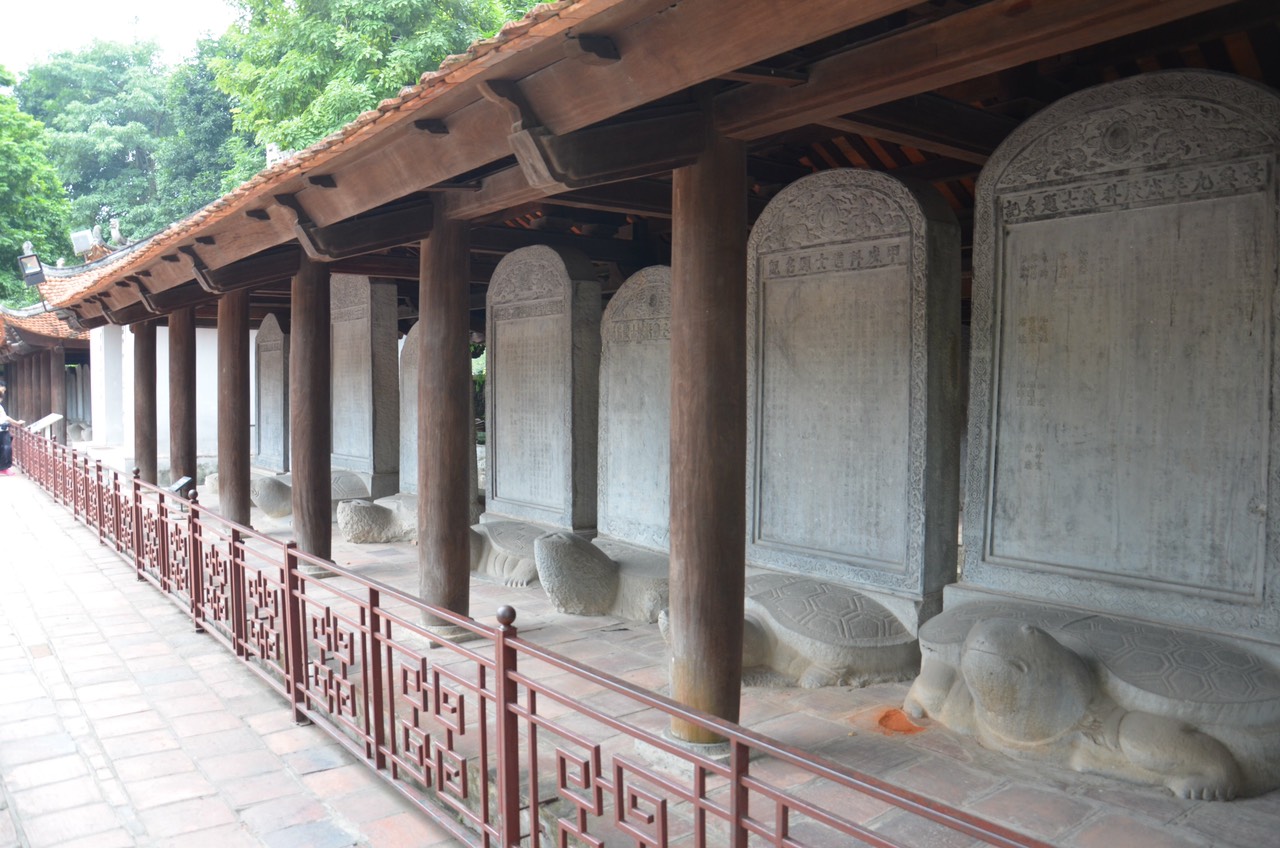
The steles, which are taller than they are wide, have an inscription in Chinese. In general, a stele consists of 3 parts: the first part gives good words towards the king, his royal court and Confucianism. The second part presents epigraphs composed by cultural, literary, historical and philosophical celebrities. And in the third part, you can find information about the examinations and the list of doctors.
Throughout the centuries, these steles have given a lasting fame and notoriety. The scholars, seeing the steles, are filled with emulation and courage, animated by the desire to contribute and faithfully serve the king.
The steles were damaged by the soldiers of Emperor Quang Trung. The steles of Van Mieu being in the territory of the village Van Chuong, the inhabitants of this village addressed a supplication to the Emperor to ask for repair.
At present, only eighty-two doctors’ steles remain. These steles allow us to know the biography of more than 1300 candidates who passed the 82 national literary competitions from 1442 to 1779, under the Le dynasty.
From time immemorial, Vietnamese students come to touch the head of each turtle before taking an exam to have good luck.
The Thien Quang well
In the heart of the third courtyard, there is a square basin surrounded by a balustrade, it is the well of celestial clarity (Thien Quang Tinh). The well symbolizes the earth, while the circle on top of the Constellation Pavilion (Khue Van Cac) represents the sky.
The Thien Quang well is built to preserve the quiet atmosphere and to purify the spirit of the students. This place is like a mirror for people to arrange their clothes before entering the fourth courtyard (Court of Sages).
-
The fourth court
Dai Thanh Mon (“Gate of Great Success” or “Gate of Success”) leads to the fourth court, the court of the Sages.
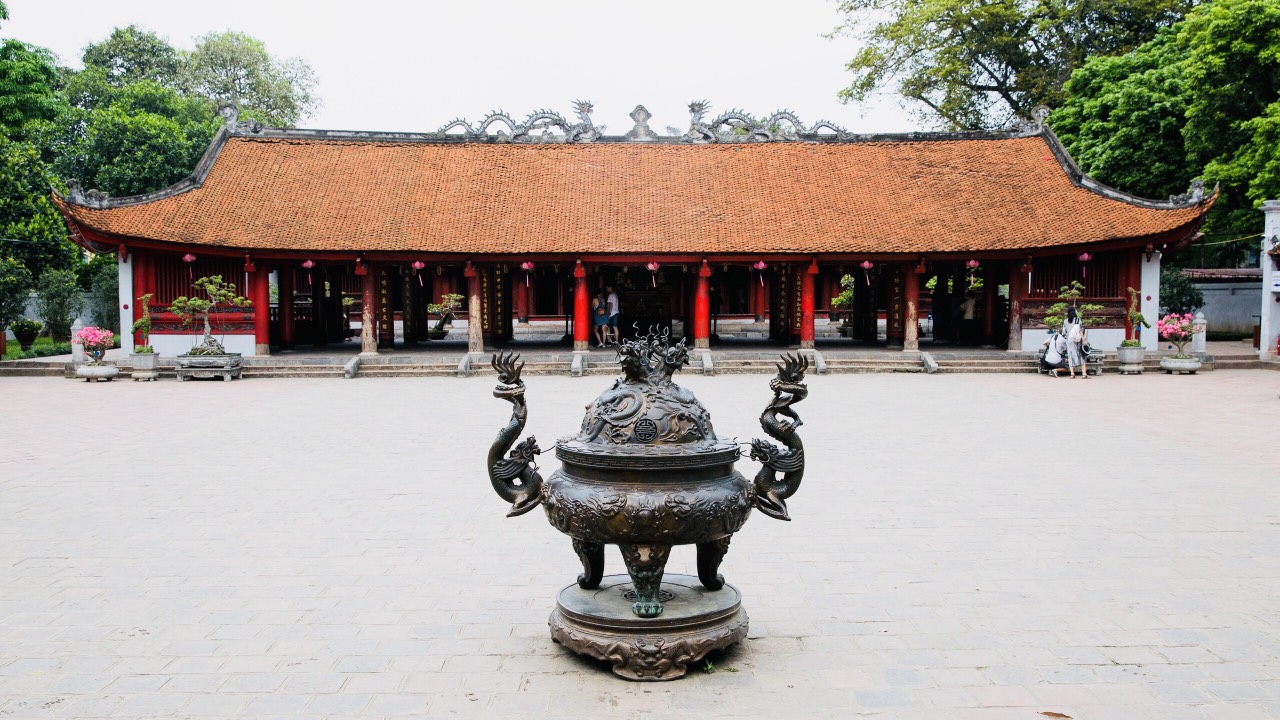
The elements of Confucianism, the knowledge of the past, the knowledge of Buddhism and Taoism are gathered here to complete the knowledge of the scholar.
Twice a year, the king came to pay homage to Confucius and his disciples in the House of Ceremonies. The altar stands in the middle. Next to the altar, cranes standing on turtles symbolize the union between heaven and earth. There is also a wooden panel above the altar, you can read: “The Master of ten thousand generations”. On the right side of the panel, the father of Vietnamese poetry – Nguyen Du, wrote: “Like the sun and the moon, through time, past and present”.
Behind this house, you can admire the shrine with the statues of Confucius and his 4 closest disciples. The other 72 disciples are honored in two side buildings: Ta Vu (Left) and Huu Vu (Right).
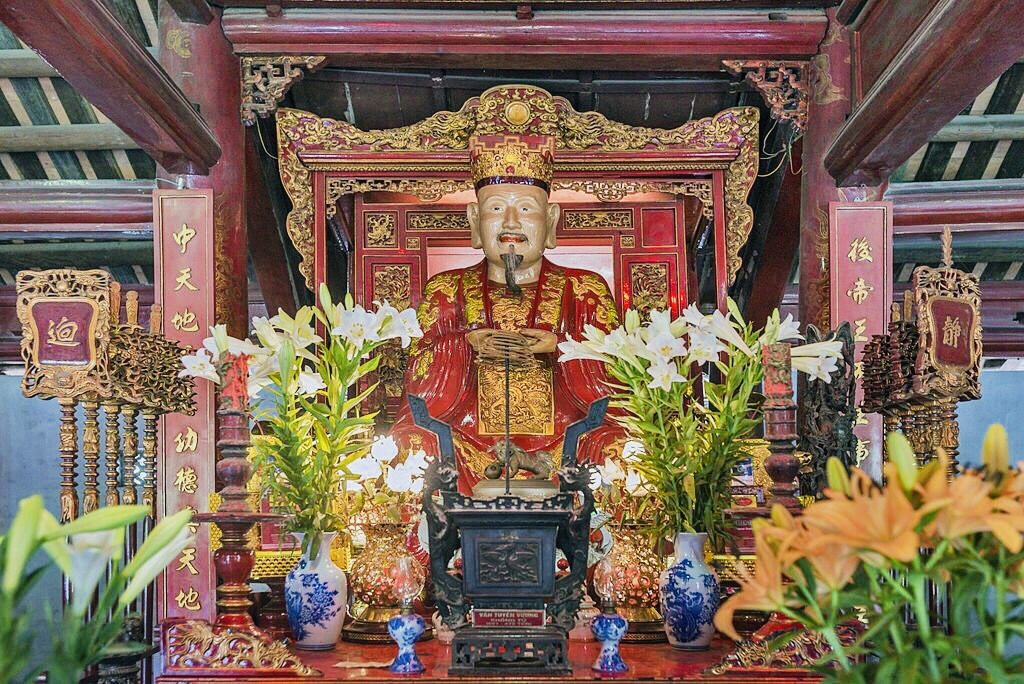
During the first centuries of the sanctuary’s existence, no one but the guardian was allowed to enter this sacred place, not even the king.
-
The fifth court
The fifth part of the Temple of Literature, called Thai Hoc, is one of the main training centers for royal mandarins.
Here you will find the statue of Chu Van An (1292-1370), a great man of the country. He is considered “the most outstanding teacher of Vietnamese education.” In addition, there are statues of the three kings Ly Thanh Tong, Ly Nhan Tong and Le Thai Tong. King Ly Thanh Tong built Van Mieu in 1070, six years later King Ly Nhan Tong established the country’s first university, and King Le Thai Tong, who drew the first map of Dai Viet (the Great Viet).
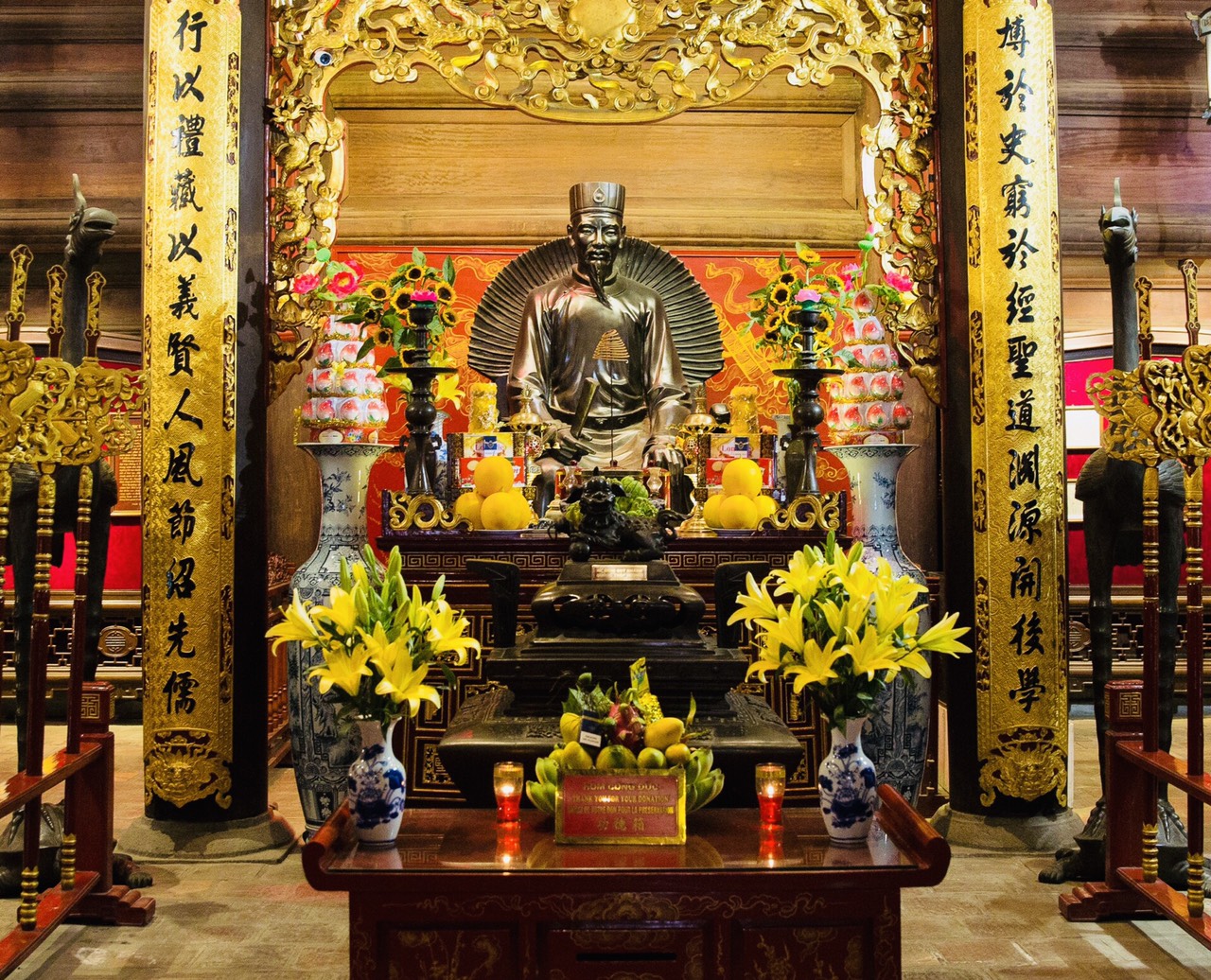
Originally intended for the education of the crown prince, the college soon welcomed the sons of ministers and mandarins. At the time, the minimum age of entry was 15, but no upper limit was specified.
From July 1999 to October 2000, this last part was renovated according to the original plan and with traditional materials.
4. Practical information
The Van Mieu – Quoc Tu Giam (Temple of Literature) occupies the third place on the register of historical sites in Vietnam.
Every year, on the occasion of the New Year, Vietnamese people go to the Temple of Literature to ask for calligraphy letters. The ideograms will bring good luck in the coming year, the characters Tâm (Heart), Phúc (Happiness), Đức (Virtue), Trí (Intelligence), Nhẫn (Patience), Thọ (Longevity) are the favorites.
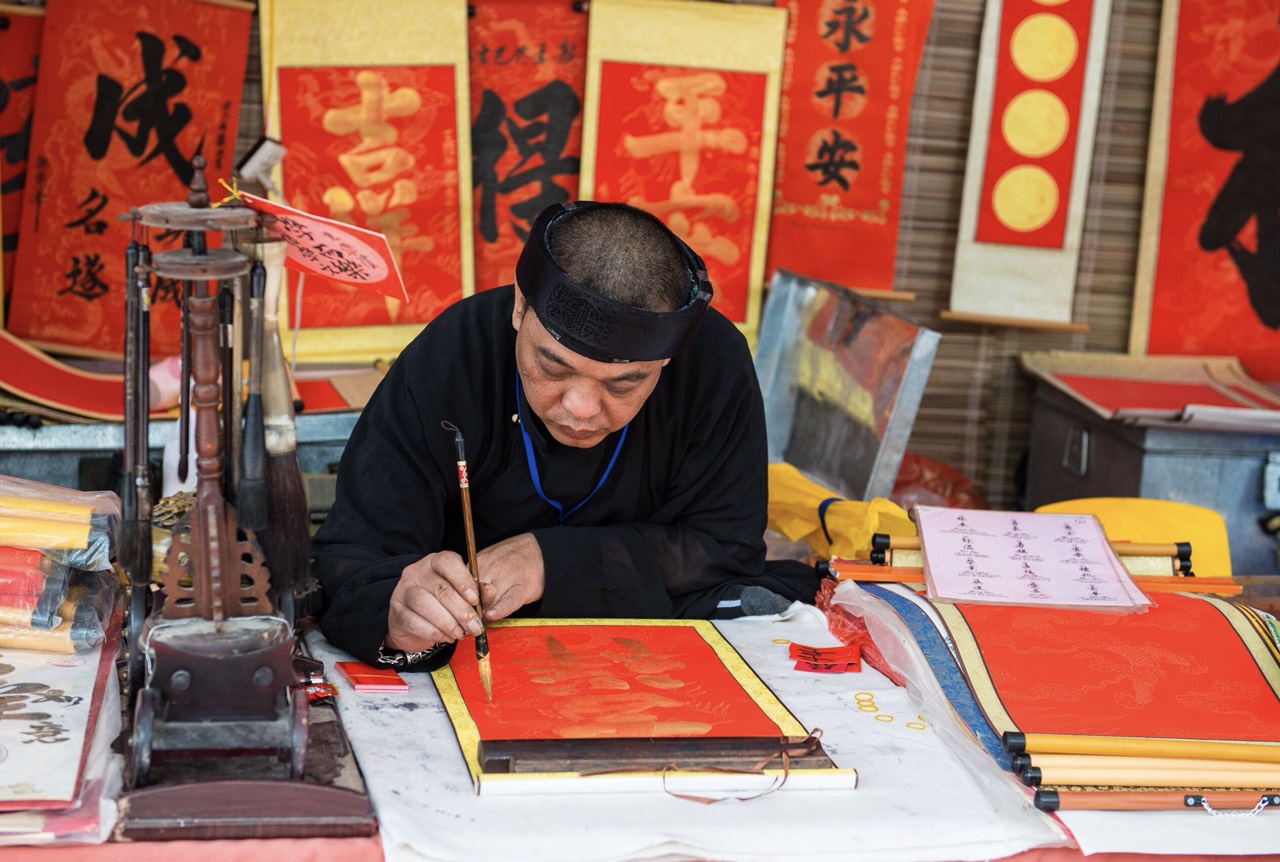
If you want to visit the Temple of Literature, you have to be careful about the dress code, it is an official historical site. So, no shorts, mini skirts or tank tops… when you are in the worship or shrine area.
Temple of Literature
Address : 58 Quoc Tu Giam, Dong Da, Ha Noi
Opening hours :
- In summer time : 07:30–17:30
- In winter time : 08:00–17:30
Entrance fee :
- Adult: 30.000vnd (less than 1,5€ )/pers
- Free admission for children under 15 years old
Minimum duration of the visit: 1h30
You might also like:





